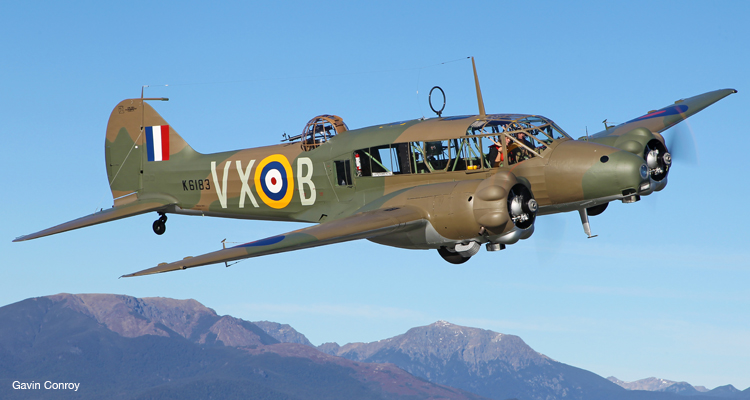Twin Beech fans might take issue, but the U.S. had nothing like the Avro Anson—a one-size-fits-all, multiuse, multicrew air force and navy multiengine trainer. It was in a sense a double-breasted Stearman: It and the Airspeed Oxford were the airplanes that trained nearly every multiengine pilot in the RAF, the Fleet Air Arm and all of Britain’s Commonwealth air forces, as well as giving practical in-flight experience to many bombardiers, navigators, radio operators and gunners. Though quickly outmoded by combat standards, it was the RAF’s first monoplane, first aircraft with retractable undercarriage and first with an enclosed gun turret.
More than 11,000 “Faithful Annies” were built between 1935 and 1952, a remarkable production run, and the airplane remained in RAF service until June 1968, parked on flightlines alongside multi-Mach English Electric Lightnings and McDonnell F-4 Phantoms. Nor was it just a trainer, for it served as a coastal patrol bomber, liaison ship and light transport, and it went on to fill a variety of civilian roles after World War II. Yet of all those Ansons built, only a few remain in museums (or, in some cases, serve as chicken coops in western Canada), and fewer still are flying.
Bill and Robyn Reid’s Avro is now one of three airworthy Ansons in the world, the only one with a wartime history and the only flying Mk. I. It made its first flight in mid-July after a painstaking 10-year restoration in Nelson, New Zealand. Built in 1943, the Annie had been shipped straight to Australia, where it spent the war as a trainer and then put in many years on the civil registry as everything from a crayfish freighter to a movie replica of the Roscoe Turner/Clyde Pangborn Boeing 247D “Warner Bros. Comet,” which finished third in the 1934 London-to-Melbourne air race.
“No, it’s not a big, hairy-chested warbird,” says Bill Reid, “but did that make the 19-year-olds who had to go to war in it any less brave? Most people think of the Anson as a trainer, but for the first two years of the war it was very much an operational aircraft. And when the Anson was confronted by the enemy, it acquitted itself very well. During the Dunkirk evacuation, one Anson was attacked by nine Bf-109s and managed to shoot down two of them and seriously damaged a third.”
The Reid Anson flew, off and on, into the 1990s. Restoration in part involved removing and correcting the many civil mods that had been awkwardly imposed on the airframe and returning the interior, particularly, to what the airplane would have looked like while serving with the RAF Coastal Command’s No. 206 Squadron. “New Zealand lost more men in Coastal than Fighter Command,” Bill Reid points out, “yet the fighter pilots got all the accolades.”





